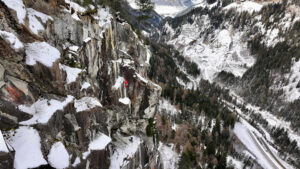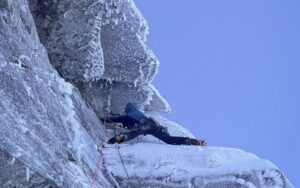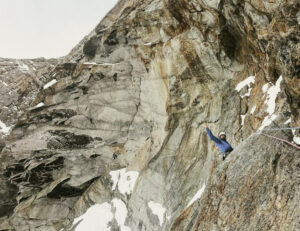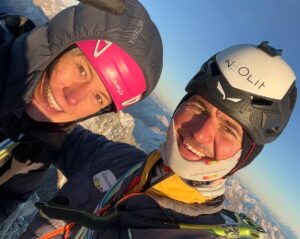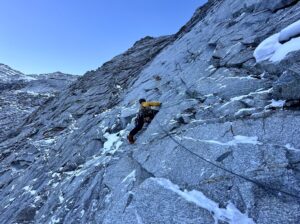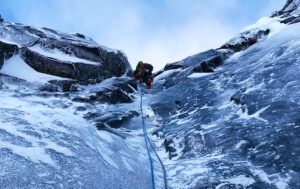The cold days across central and northern Europe have been an unexpected boon for lovers of ice and winter. Ice climbers, in particular, are busier in early December than they’ve been in years. Here’s a review of some of the latest first ascents and repetitions and some expert insight about the ever-changing conditions.
Dolomites on ice
No rest for Simon Gietl, as his playground in the Dolomites falls under the spell of one of the most intense snow and cold spells of the last 10 years. After opening Eiwa with Vittorio Messini, he set a new line on Dec. 5 with Aaron Durogati: Krampus, a 220m-long route of M7 Wi 5+ in Taufers, in South Tyrol.
As openers usually do, they left some advice for those following in their tracks: “The four pitons used were left in place, the rest must be secured yourself,” they wrote.
A game of openers and followers
Yesterday, we asked Martin Sieberer about the ice climbing scene and how the game works between climbers, especially about grading an ice climb. How valuable is it to assess the difficulty of an ephemeral route that changes from one day to the next? Explained Sieberer:
As with rock climbing, there are so many types of climbers. Some of them always want to push and set new standards and find new routes. However, this is quite time-consuming because many ice climbs are hard to reach.There are so many ice climbing spots in [my region] of the Tyrol — Zillertal, Lüsens, Pinnistal. Somebody always has to scout them first. Many climbers wait till the word is out and then they climb. That is an easier way to get to the right route, but it lacks the feeling of being the first.Likewise, grading can vary between the first ascent and a repetition. I remember being the first on the famous Zauberflöte in Langental. It was an incredible experience but very hard to put in the first hooks into the icicles. Afterwards, it is always easier. So a hard WI6 can soon become an easy WI5.

Martin Sieberer on the first pitches of Zauberflote, “before it gets steeper,” he wrote. Photo: Martin Sieberer/Instagram
Norway: climbing in darkness
In northern Norway, Juho Knuuttila bagged the first ascent of Et flygende besøk (M7, WI4) in Sørdalen with @craic_climber. It is a hanging ice corner that Knuuttila had eyed some years ago. This month, it happened to be in good condition.
The line is six pitches long, leading to a plateau, and has no fixed gear on the wall. Since Norway is so far north, climbers do their work mostly in the darkness of the Polar Night.
The crux is the transition to a hanging ice dagger that, according to Knuutila, “required all the classic tricks, from knee bars to stein pulls, and from hand jams to thin turf blob hooking.”
The Norwegian climber warns those who want to repeat the line: “[It] is harder than Remember mi, making it one of the more difficult ones in Sørdalen.”
Scottish ice

Dave McLeod on a new ice and mixed route on the frigid Coire an Laoigh. Photo: Dave McLeod/X
Dave McLeod has opened his first line of the winter on Coire an Laoigh, near Ben Nevis in Scotland. There is not much info, but the difficulty is obvious from the video he shared on X.
https://x.com/davemacleod09/status/1732740248092762581?s=48

